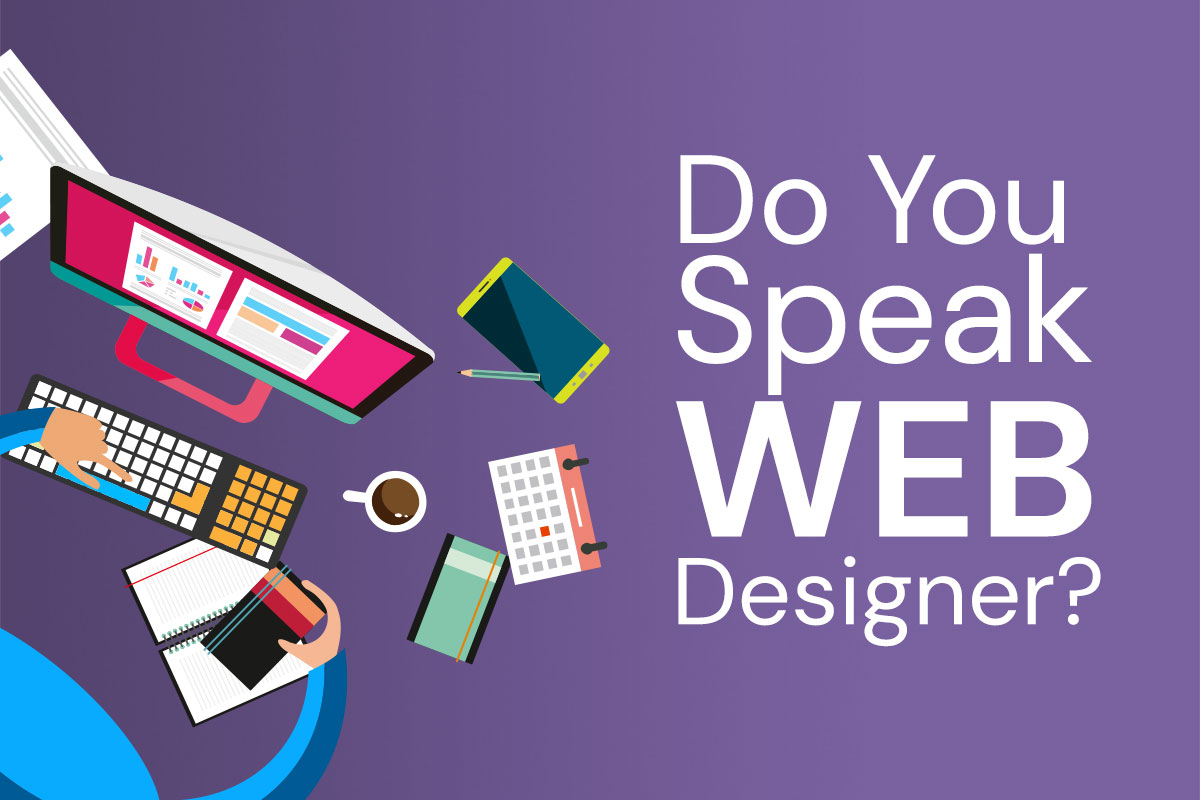So you’re interested in a new website? Congratulations! But does it sound like Charlie Brown’s teacher when we start talking? For that, we apologize. Here’s a primer to help translate some of the terms we web designers throw around into plain English.
Developer: a developer is basically a coder, and may specialize in the development of applications for the web. Sometimes we’ll say such-and-such will require “a bit of custom development” if there’s not an off-the-shelf solution to meet your particular need.
Content Management System (CMS): a Content Management System is an application, usually web-based, that makes it easier for users with limited expertise to add, modify, and remove content from a website. Some popular CMSes include WordPress, Joomla!, and Drupal.
Front End: the front end refers to the part of the website that your users will see and interact with.
Back End: this can either be the part of the website that allows you to update it via the Content Management System, or it can be even more gritty than that, referring to the code used to create the website. In either case, it’s a part of the website that is hidden from the view of regular website visitors.
Static: a website can either consist of static pages or dynamic pages. Static pages are delivered to the user exactly as they are stored, in contrast to dynamic pages, which are generated by a web application such as a Content Management System. We don’t build static websites too often these days, but sometimes they’re perfect for a very simple website. The nice thing about them is that they’re difficult to hack (though it can still be done).
E-commerce: sometimes abbreviated as “e-comm,” this refers to any system that allows users to purchase goods or services from your website. It could be as simple as adding Paypal buttons to an item on your website (an inexpensive solution perfect for selling one or two items), or developing a whole website that allows you to manage such complex selling functions such as product management, inventory, order fulfillment, shipping, promotions, and more.
Mockup: before we begin the process of coding, we generally provide the client with one or more mockups of his future website that shows how a particular webpage would look if it were live. These mockups are “flat,” meaning that they’re just an image. You can’t interact with them by pushing any of the buttons shown, and the animations won’t work at this stage.
Above the Fold: this term is a relic from newspaper days. The most important content on the website should be positioned “above the fold,” so to speak—above the point where users have to scroll down.
Breadcrumbs: this cute term comes from the story of Hansel and Gretel, and refers to the little navigation elements that generally appear near the top of a webpage. On a clothing website, it might look something like this:
Home > Clothing > Hats
Favicon: a favicon is a tiny icon displayed in the web address bar in most browsers next to the web address. They’re not critical to the function of your website in any way, but they do make it look more polished.
Domain: your domain is the name your website goes by, generally yourcompanyname.com. You’ll need to register your domain at a domain registrar, and for that we recommend GoDaddy, which is both inexpensive and reliable. Need tips on picking a domain, or other information about domains? Click the domain registration tag in our sidebar and see lots more information.
Browser: the browser is the application on your computer or mobile device you use to view websites. Firefox, Chrome, and Internet Explorer are some of the most popular browsers. It’s always a challenge to make sure your website is “cross-browser compatible,” that is, it looks pretty much the same on any browser… unless of course, we’re talking about a responsive website.
Responsive: a responsive website shrinks or expands to fit the device it’s displayed on. This has become much more important in the last year or so as mobile devices have overtaken the market. Google has even begun penalizing websites that are not responsive (or mobile-ready) in search engine rankings; read more about it here.
Hyperlink: a hyperlink is just a link from one page to another. It can be text or an image.
Meta Tag: meta tags are code used in your website to add keywords or other information about your website. It used to be the case that people would stuff their meta tags with keywords, and as search engines get smarter, this has become less important.
Navigation: this is whatever system allows visitors to a website to move around the site. Usually there is a “navigation bar” near the top of the page where you can see a menu of links to important parts of the website. Navigation can also refer to breadcrumbs, links within pages, pagination, and sidebar menus, for example.
Open Source: open source code is free and available to the general public, as opposed to software that must be purchased. This code is generally developed by volunteers building upon each other’s work, and the advantage is that it’s a lot more flexible and customizable than for-purchase software. WordPress and Joomla!, for example, are both open source.
URL: URL stands for Uniform Resource Locator, which just refers to the web page’s full address, such as http://thisaddress.com
We could go on to talk about UI and UX, but these really are the most important terms you’ll come across when talking to a web designer. If you’re technology-phobic, we specialize in making the process as painless and comprehensible as possible. Contact us for a consultation!






